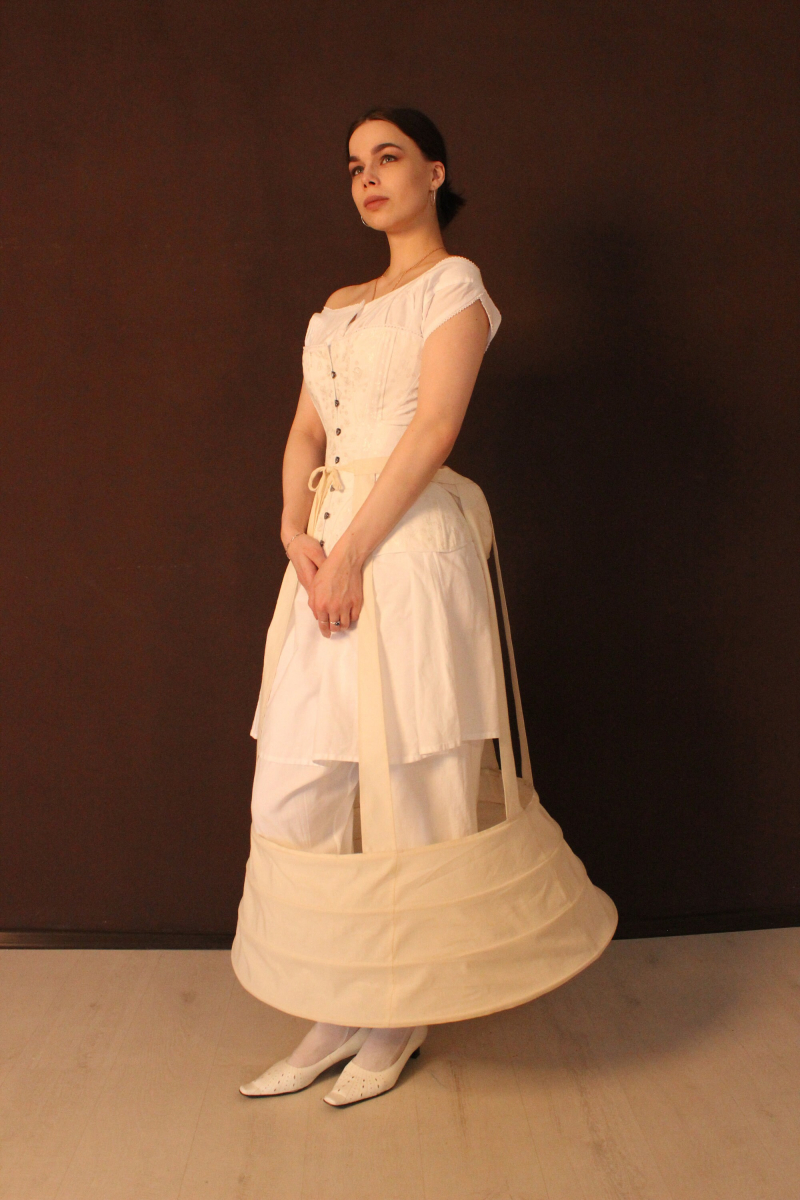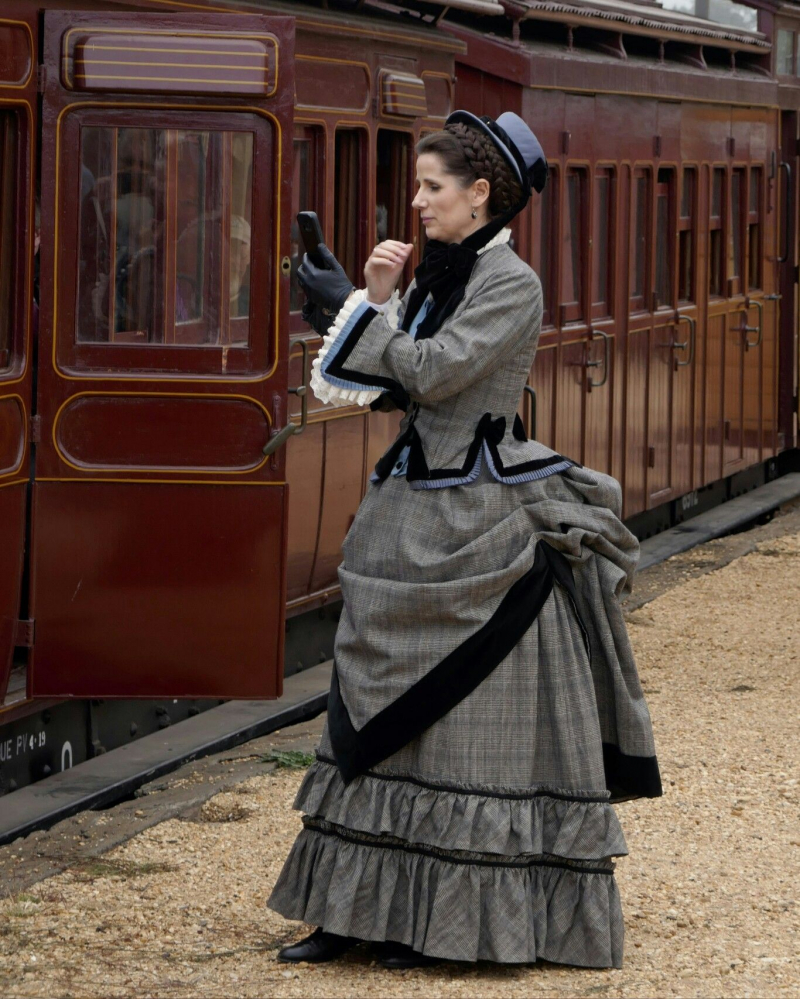Bustles
One of the ancient items that hasn't yet made an appearance in contemporary fashion is the bustle. However, to prevent the skirt from dragging in the Victorian eras, bustles were worn below the skirt in the back, right below the waist. The back of a skirt will often be pulled down and flattened by heavy fabric. As a result, a woman's petticoated skirt would sag while wearing it on a regular basis (from merely sitting down or moving about).
The rear fullness of the skirts was first carried fairly low and frequently fanning out to form a train in the early phases of the bustle vogue. The loops and gathers of the fabric and the embellishments used during this era mark the change from the enormous crinoline-enhanced skirts of the 1850s and 1860s. The fabric of the skirts fell fairly steeply to the floor, altering the form, and the bustle eventually developed into a much more obvious humped shape on the back of the skirt right below the waist.
After a break, the bustle made a comeback in what is referred to be the second phase. The figure of this phase, which became more pronounced in the late 19th century, is distinctive. To sustain the weight of the explosion of textiles that hung over it, an industrial support bustle was created. The gown's back was heavily decorated with bows, frills, lace, pleats, and other embellishments. These fashion trends in clothes turned out to be unsustainable due to their weight as women began to populate the streets at the beginning of the 20th century.












